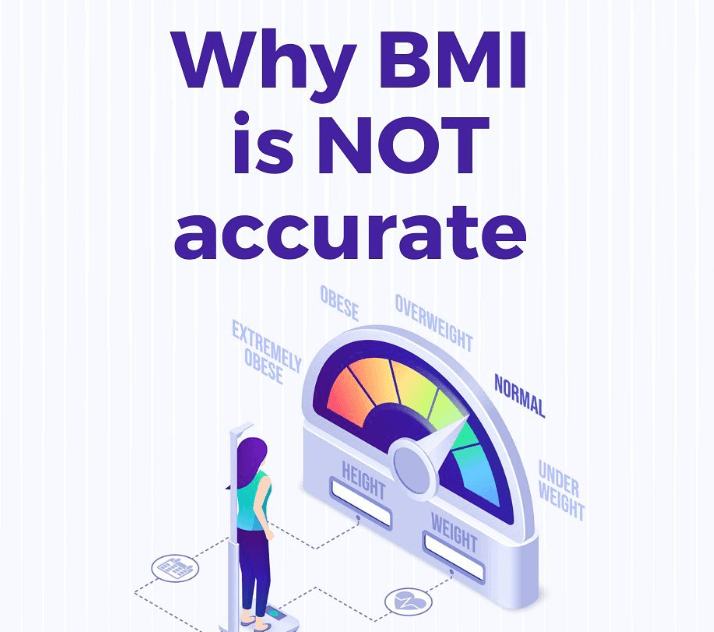BMI, or Body Mass Index, is a simple formula using a person’s height and weight to calculate a number supposedly representative of their level of body fat.

BMI was initially created in the 19th century by the Belgian mathematician and statistician Lambert Adolphe Quetelet as a way to measure obesity in the general population.
Body mass index (BMI) is one of the most popular ways to measure body composition concerning health.
However, research indicates BMI is NOT the most accurate depiction and can have severe limitations in weight distribution, body fat percentage, and different demographics.
BMI DOES NOT MEASURE BODY FAT PERCENTAGE
Body fat percentage (BFP) is the % of your body that is fat tissue compared to your total body mass.
It is generally measured with skinfold callipers, bioelectrical impedance, or, most accurately, through a DXA X-ray Scan.

BMI cannot account for the difference between muscle and fat.
Because muscle tissue is more dense than fat, many athletes and bodybuilders are considered overweight according to BMI despite being in peak athletic health.
PMID: 15231223
BMI DOES NOT ACCOUNT FOR DIFFERENT DEMOGRAPHICS
Researchers found the BMI obesity cut-off for Asian populations actually falls lower than the standard BMI chart.
In 2004, the World Health Organisation found that Asian people with a high risk for type 2 diabetes and cardiovascular disease had lower BMIs.
PMID: 14726171
Another 2004 study of over 15,000 Chinese adults found that a high risk for cardiovascular disease started at a lower BMI and waist circumference than Caucasians.
This means when screening for BMI, Asian people may have a higher disease risk in categories considered healthy or normal on the BMI chart. PMID: 15531658
BMI DOES NOT MEASURE BODY FAT DISTRIBUTION

Where you have fat on your body matters for your health. Fat around your belly can be riskier than fat on your thighs or butt.
In a 2017 study, two people with the same weight could still have different health risks based on their lifestyle, what they eat, and where they carry their fat.
Also, having more muscle compared to body fat is good for your heart and overall health.
And guess what? This muscle thing is even more crucial for women than men!
Source: Radiological Society of North America. “Fat distribution in women and men provides clues to heart attack risk.” ScienceDaily. ScienceDaily, 28 November 2017.
SUMMARY
Measuring Health: Beyond Just BMI
- Understand that BMI is not the only measure of health.
- Remember BMI can be inaccurate; it often misclassifies obesity, especially in females.
- Use BMI as a supplementary tool, not a sole indicator.
- Look at other factors like body fat percentage and weight distribution.
